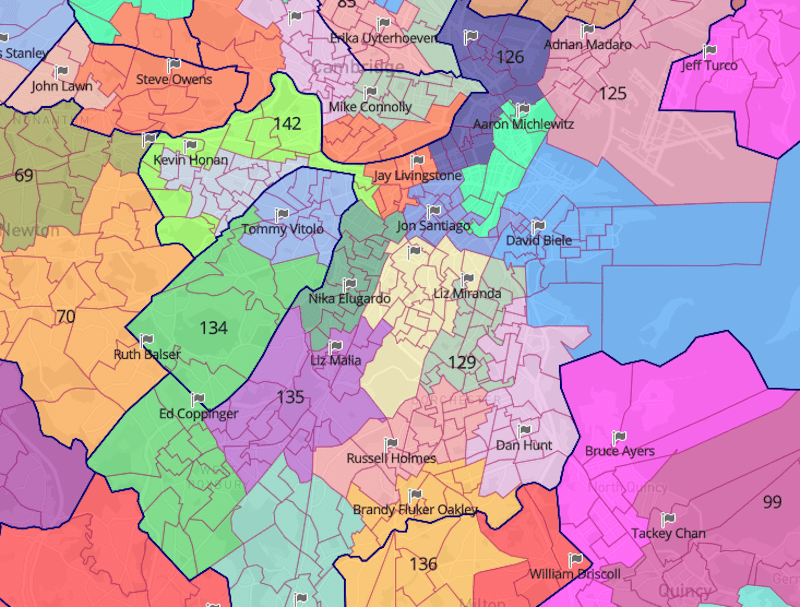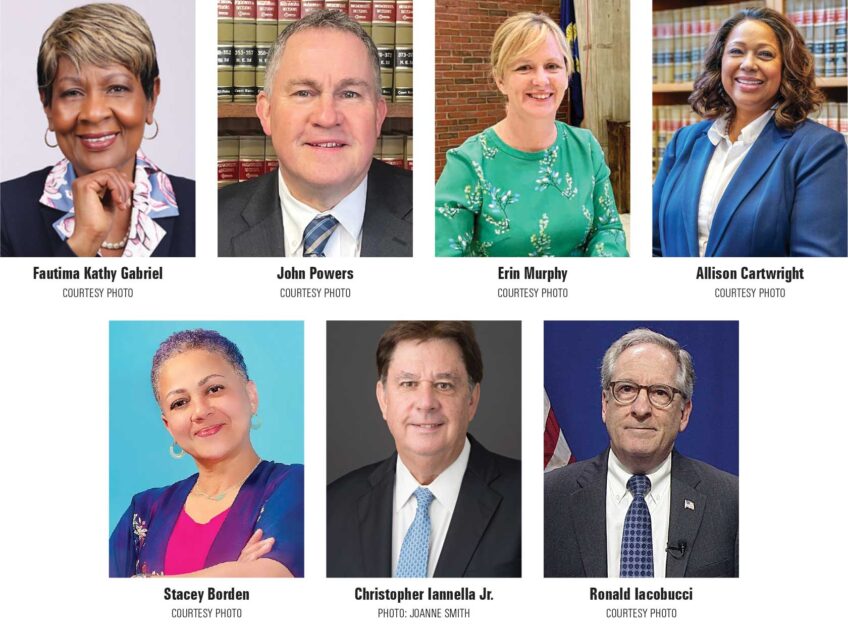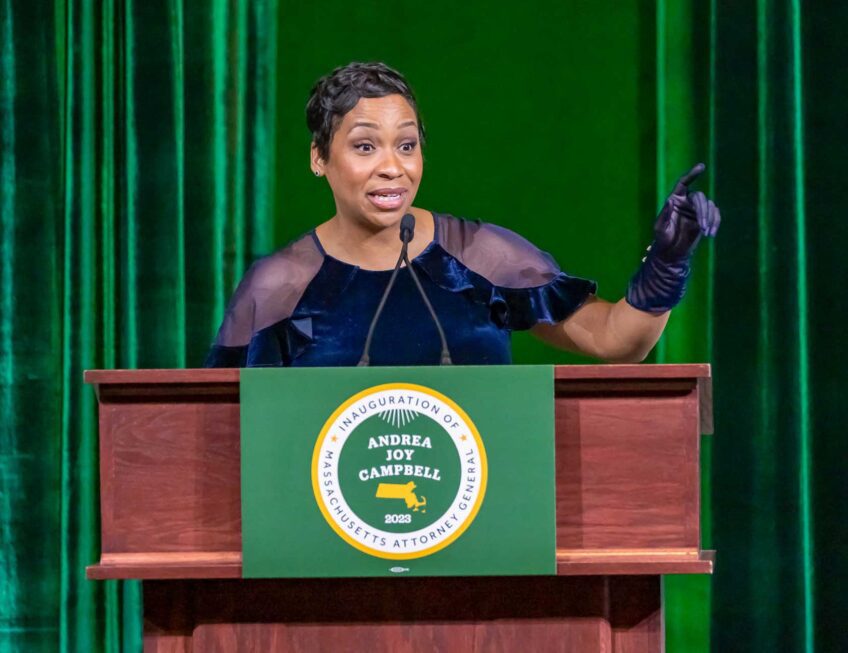Redistricting coalition seeks increased representation for communities of color
Advances map that would bring the number of majority-minority House districts from 20 to 27

The Drawing Democracy Coalition (DDC) released proposals for House and Senate redistricting maps Sept. 28 that would increase the number of districts with majority populations of color.
The coalition, which is composed of community organizations, lawyers, public policy advocates and data and mapping experts, gathered proposed maps from groups across the state to create a proposal for redistricting that would create nine new House districts and four Senate majority-minority districts, where a majority of the population is a racial or linguistic minority.
Beth Huang, director of Massachusetts Voter Table, said the redrawn districts can give political power to communities of color who have, in the past, been represented by legislators who don’t look like them.
“I think a consistent pattern that we heard is that many BIPOC [Black, Indigenous and People of Color] and immigrant residents of gateway cities did not want to be grouped with much whiter and wealthier towns nearby,” Huang said at a press conference Sept. 28.
Statewide, the proposed maps would increase the number of majority-minority House districts from 20 to 29. Huang said those would include districts in some communities across the state that have never had a representative of color before.
In the Senate, the number of majority-minority districts would go from three to seven. Huang said the new districts would be anchored in gateway cities, cities that are economic anchors to the surrounding areas and regions, such as Lawrence, Methuen, Chelsea, Everett, Lynn and Brockton.

Beth Huang TWITTER PHOTO
In Boston, the proposed redistricting would create a Senate district with a majority Black population of eligible voters running through Uphams Corner, Grove Hall, Dorchester Center, Mattapan, Hyde Park and Roslindale, largely compiling precincts currently in the 1st and 2nd Suffolk Congressional Districts.
Much of the remainder of the current 2nd Suffolk Congressional District would be combined with Boston precincts containing Chinatown into what DDC refers to as a coalition district, in which the majority of the voting-age population is non-white from multiple racial backgrounds.
The proposal would also largely remove the city of Boston from the existing 1st Suffolk and Middlesex District, which currently includes large portions of Downtown Boston, as well as East Boston and neighboring communities like Cambridge, Winthrop and Revere. Instead, the coalition’s proposal groups the downtown precincts in with what is now, largely, the 1st Suffolk District. East Boston would fall under a new coalition district that also would also include Lynn and Revere to pull together the immigrant-heavy communities that are all facing similar struggles with housing and climate change.
Cheryl Crawford, executive director of MassVOTE, said these new Senate districts would create more equitable representation for the communities of color they would encompass.
“These Senate districts would help ensure that Black and brown, low-income and immigrant communities may receive fair, just and accessible representation on Beacon Hill,” Crawford said at the press conference. “These would strengthen the political power of Boston’s Black and Asian-American populations, as well as East Boston’s, Revere’s and Lynn’s substantive Latino population.”
Boston’s House districts would also be reshaped under the proposal to create more districts with majorities of residents or voters of color.
A district encompassing large portions of the existing 7th Suffolk District, currently represented by Chynah Tyler, would pull in Lower Roxbury portions of the 9th Suffolk District represented by Jon Santiago and Grove Hall portions of the 11th Suffolk Districts represented by Liz Malia to cover a broader portion of Roxbury. The three districts all currently have a majority population of color, but the redrawn district would be majority Black.
The 14th Suffolk District, currently represented by Rob Consalvo — would shed a few precincts in Roslindale and West Roxbury and pick up a few in Mattapan to create a redrawn district that would be majority Black.
The current 5th Suffolk House District, currently represented by Liz Miranda, would remain largely the same, but would draw in a few precincts that are part of the 4th and 17th Districts. The 5th District was majority Black after the last redistricting process in 2011, but the additions would raise the percentage of Black residents from about 52% to about 54%. The Latino population would raise from about 24% in 2011 to 28% in 2021.
The plan would also redraw districts in much of the South End with portions of South Boston, in an eastern chunk of Dorchester and in Mission Hill with a portion of Jamaica Plain to create three coalition districts comprised of a majority of people of color.
Under the DDC plan, Chelsea would cover its own House district, while Charlestown — with which it currently shares the 2nd Suffolk District — would be included in a House district with the West End and Back Bay.
Gladys Vega, executive director of the Chelsea Collaborative, said the change would provide the city with representation that she said is much needed, especially in light of the impacts of the COVID-19 pandemic.
“If there’s anything I experienced during the pandemic it was the lack of resources that, at the peak of the pandemic, were coming to Chelsea,” Vega said. “And it wasn’t because they didn’t see the numbers, it was because we didn’t have very strong people in certain times advocating for the necessary resources coming — whether it was through the feds or state.”
In their process, Huang said the DDC didn’t take party politics into to consideration, opting instead to focus on the greatest representation of people of color instead.
The maps released by DDC are only a proposal. The redistricting process, which happens every 10 years using results from the U.S. Census, occurs in the state legislature, led by the Joint Committee on Redistricting. All new districts are approved by the state House, Senate and governor. Once approved, they will go into effect for the 2022 election cycle.
Senator Williams Brownsberger, Senate chair of the Joint Committee on Redistricting, acknowledged the work the coalition has done in a statement to the Banner.
“We really appreciate the work that the Drawing Democracy Coalition has done to bring many voices into the process and we’re really grateful for the thought that they’ve given to the difficult issues that we face,” Brownsberger said.
Huang said the coalition has been speaking with the chairs of the redistricting committee and will continue to advocate for their proposal.
“Today we’re putting forward our vision for equity and we see that as an important starting place for our maps,” Huang said. “We will be advocating to the Joint Committee on Redistricting, as well as every legislator on Beacon Hill, about these opportunities we see for BIPOC, immigrant and low-income communities in the commonwealth.”






